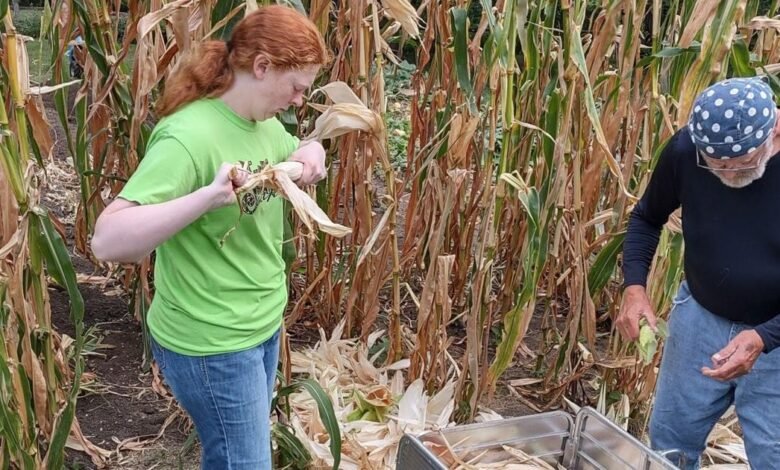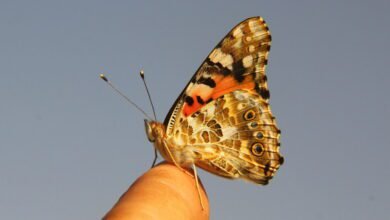Sioux Center student attends Los Angeles science fair | Sioux Center News

SIOUX CENTER — Science seems to run in the family for Hannah Woudstra, who will take her research on a special variety of corn to the Regeneron International Science and Engineering Fair in Los Angeles, May 11-17.
This is the first time the 19-year-old Sioux Center High School senior has made it to this prestigious competition after two years of work developing and refining her topic, which examined the nutritional and cultivation benefits of a specially developed calico corn. .
Called Nancy’s calico meal corn, it was created and developed by her grandfather, Phillip Bach of Orange City. Named after his wife, it is a project he spent 40 years on.
“He did some rudimentary tests, but I wanted to do more specific tests and honor all the time he dedicated and maybe get this corn to those who need it. Ultimately, that’s his goal: to help people who need food because they can’t grow what they have now.”
Bach began working on this corn in 1978 for a contact in Mexico. At the time, Bach was an elementary school science teacher and was asked to develop corn that could help a protein-deficient village.
“He got to the early stage and sent that corn back to his contact in Mexico and set it aside for a few years. Then, years later, he found some of those seeds again, planted them and started growing them again,” Woudstra said. “As he developed it, he was able to tell me what steps he took and some specific details, like the type of soil he used when he developed it. He had some very detailed notes about how he farmed, how much rain it rained every year. He also did some preliminary vitamin and protein testing. We had a lot of data and information that was really helpful.”

Hannah Woudstra, a junior at Sioux Center High School, measures how much water she will use for a special hybrid corn grown in a greenhouse at Northwestern College in Orange City. It is part of the research that took her to the Regeneron International Science and Engineering Fair in Los Angeles, May 11-17.
Science has always interested Woudstra, which explains why she worked so hard on this project. It’s something she plans to continue when she goes to college, likely majoring in animal sciences or biology.
She started researching this corn for science fair contests last year.
“Last year I looked at protein content because in many poorer countries people can’t afford to eat the kind of protein we can here, like meat or dairy. I was looking for cheaper alternatives. Most of them eat corn, so I looked at this corn because we thought it had a higher protein content that could alleviate some of the lack of protein they experience.”
This year, it expanded its research to examine other characteristics that would be desirable in countries facing food insecurity.
“Since drought is one of the main causes of food insecurity, I looked to see if this would grow well during droughts, because if we can’t grow corn, it doesn’t do us any good.”
She also measured its calorie content to see how it compared to other corn varieties. This was particularly important because some foods with higher protein content have lower calorie content. Given the scenarios she had in mind, a higher calorie count could be beneficial.
While working, she learned a lot about her grandfather’s special corn. She knew it should work well in drought conditions, but was surprised to learn that it preferred drought-like conditions.
“When I was doing the drought tests, my control group received an inch of water per week, which is about what farmers here typically want for their corn. But it actually worked very poorly with excess water. I thought it would work because most of the time corn likes a lot of water. But at the time it performed poorly and stood out when there was less water. I really didn’t think it would work as well with less water,” she said.
Students can get to the International Science Fair through one of two routes: by being selected by judges at a regional fair or at a state fair.
“This year I went to both. At any level, if you have the best project, they will nominate some projects to go to the International Science Fair,” she said. “Actually, it was the regional fair when I arrived at the international fair.”
This will be the first time she will attend ISEF. As great an achievement as it is, it wasn’t something she thought she would participate in.
“At the beginning of class, our science fair class, we watched a documentary about the International Science Fair and we looked at it and thought it was fun, but none of us are going to make it there. So I was really shocked when I did it because it was an unattainable goal because there have to be people with better projects than me, people who have been working on things since fifth grade. I only have a two-year project; What’s that compared to an eight year old?” she said.
Although she is surprised by her elevation to ISEF this year, she welcomes it. She and the other competitors will know who the winners are at the end of the fair, during two award ceremonies.
“I’m really excited to go because I really didn’t think it was possible. I’m really excited to share my project,” said Woudstra. “I’m also grateful that my grandfather trusted me with his corn so I could do this project.”




